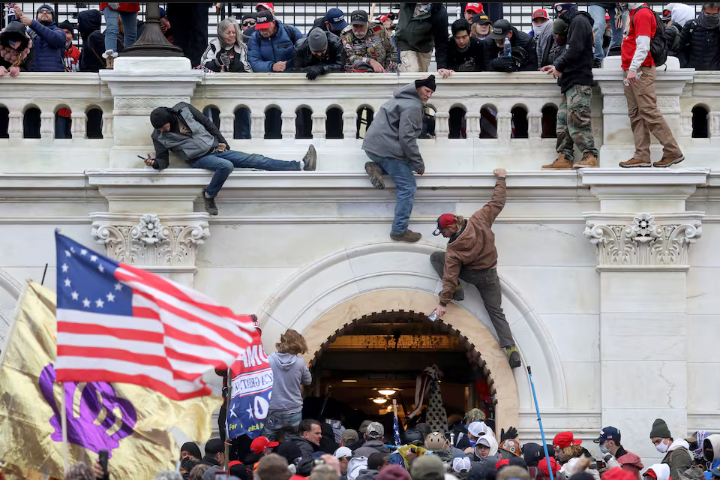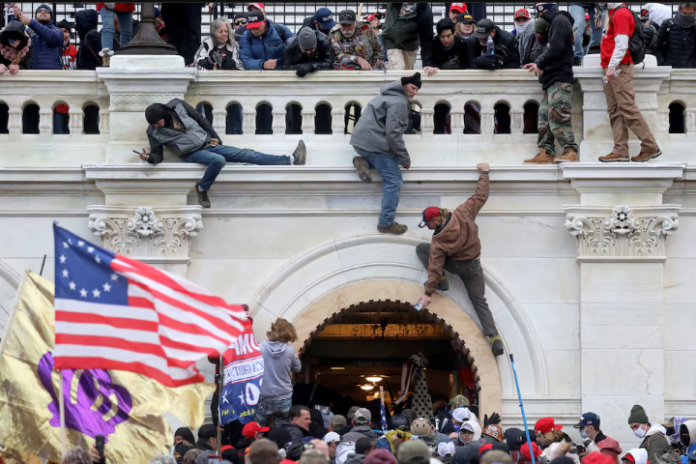In a dramatic return to the White House, President Donald Trump issued a wave of executive orders during his first full day in office, including pardons for 1,500 individuals involved in the January 6, 2021, attack on the U.S. Capitol.
The decisions, which mark the beginning of Trump’s promised “Golden Age of America,” have already ignited political firestorms and legal battles.
Pardoning Jan. 6 Attackers
Among the most controversial moves, Trump pardoned over a thousand individuals convicted in connection to the Capitol riots. This decision has drawn sharp criticism, particularly from lawmakers who were endangered during the attack, as well as from civil rights advocates. The mass pardons symbolize Trump’s commitment to those who view him as a defender of their vision for the nation.
In his inaugural address, Trump framed himself as a leader chosen by God to rescue the nation, calling for a revival of traditional American values and declaring his intent to dismantle policies introduced by the Biden administration.
Rolling Back Biden-Era Policies
True to his campaign promises, Trump acted swiftly to reverse key Biden administration policies. He withdrew the United States from the Paris climate agreement for the second time, citing a need to prioritize domestic economic interests over global environmental commitments. Analysts predict this move will have a far-reaching impact on international climate negotiations and the U.S. energy industry.
Trump also lifted restrictions on offshore oil and gas development and scrapped federal policies supporting electric vehicles and artificial intelligence development. His environmental actions signal a return to traditional energy policies and deregulation.
Immigration Crackdown
Immigration policies were another focal point of Trump’s first day. The president ordered the cancellation of the CBP One program, a Biden-era initiative that allowed migrants to enter the U.S. legally by scheduling appointments via an app.
This sudden shift left thousands of migrants stranded and unsure of their next steps, sparking criticism from immigration advocates and legal challenges from groups like the American Civil Liberties Union.
Other Key Changes
Trump also announced several structural changes to the federal government, including the creation of a new “Department of Government Efficiency,” led by billionaire Elon Musk. The department aims to streamline government spending and cut bureaucracy.

Additionally, he enacted a hiring freeze for federal employees and mandated a full return to in-office work, reversing remote work policies implemented during the COVID-19 pandemic.
On social and cultural issues, Trump reiterated his stance on gender identity, signing an order requiring federal agencies to recognize only genders assigned at birth. This aligns with his broader agenda to eliminate federal diversity programs.
Economic and Global Impacts
Trump’s return to the White House has created mixed reactions in global markets. The U.S. dollar saw sharp fluctuations, while stock futures rallied amid uncertainty over trade policies. Trump hinted at raising tariffs on Canada and Mexico in February, signaling potential trade tensions ahead.
Globally, Trump’s decisions have drawn concerns from allies, particularly his intent to leave the World Health Organization and take back control of the Panama Canal. Germany has already signaled plans to counter Trump’s withdrawal from international agreements.
Controversy and Legal Challenges
While Trump’s Republican majorities in Congress offer legislative support, his sweeping actions are expected to face legal challenges. Critics argue his policies undermine progress in climate action, diversity, and immigrant rights, while supporters praise his focus on restoring traditional values and economic growth.



